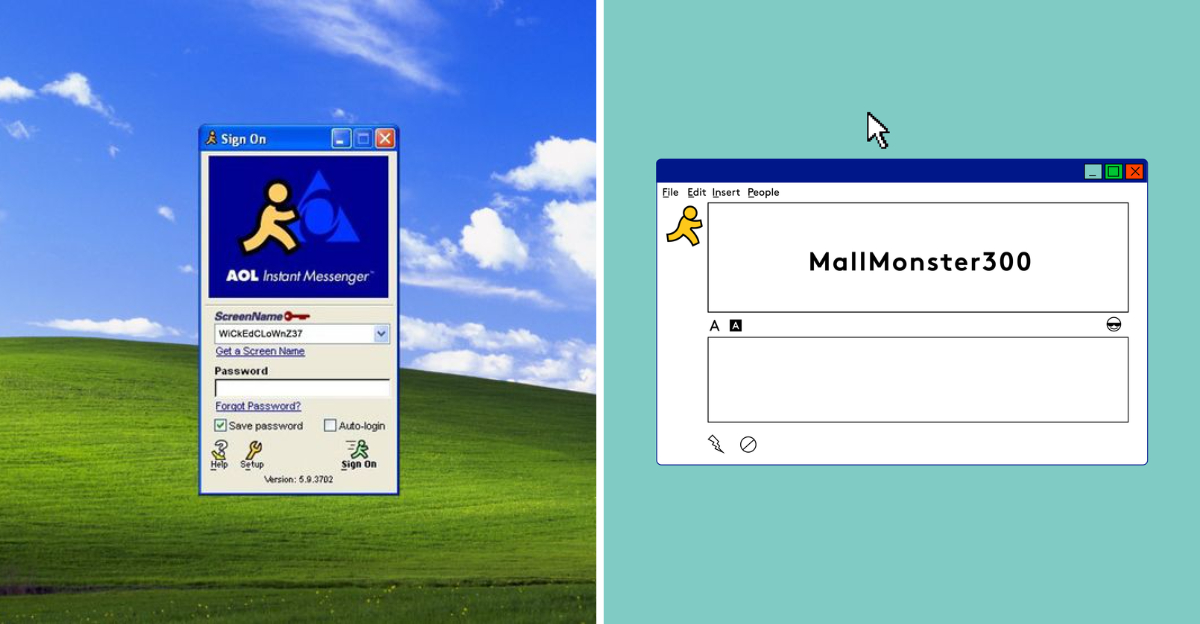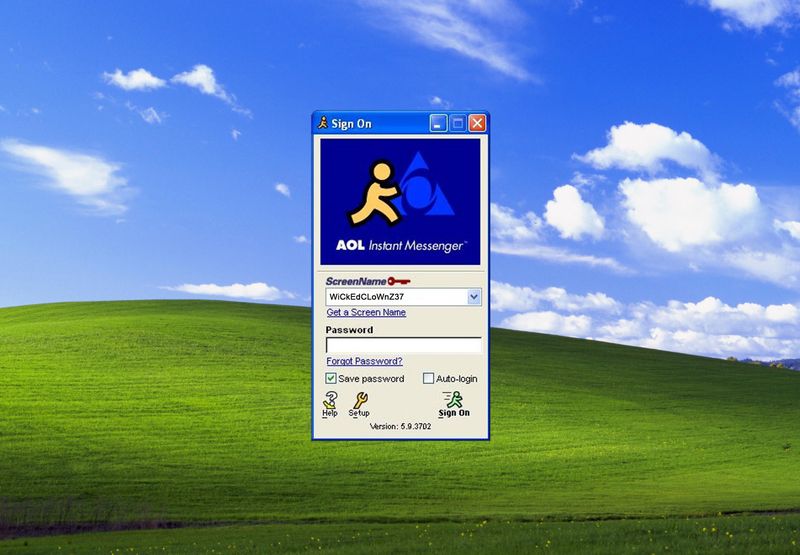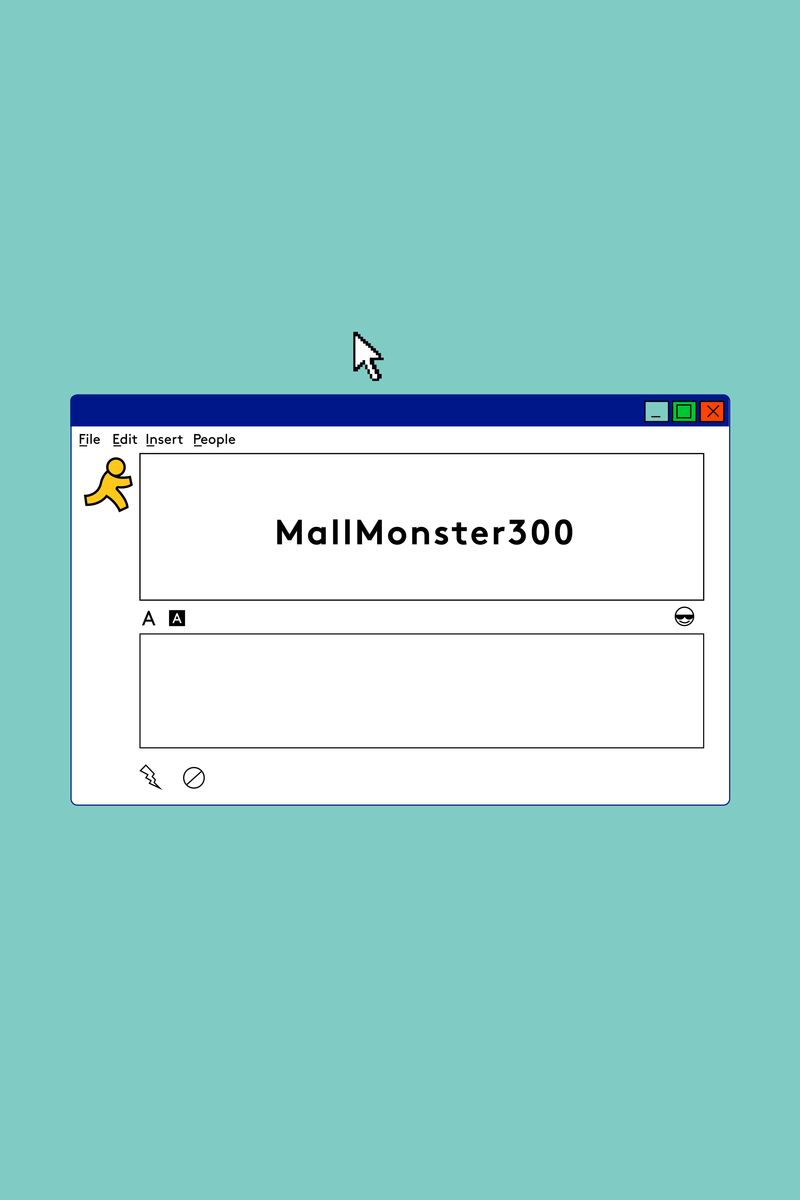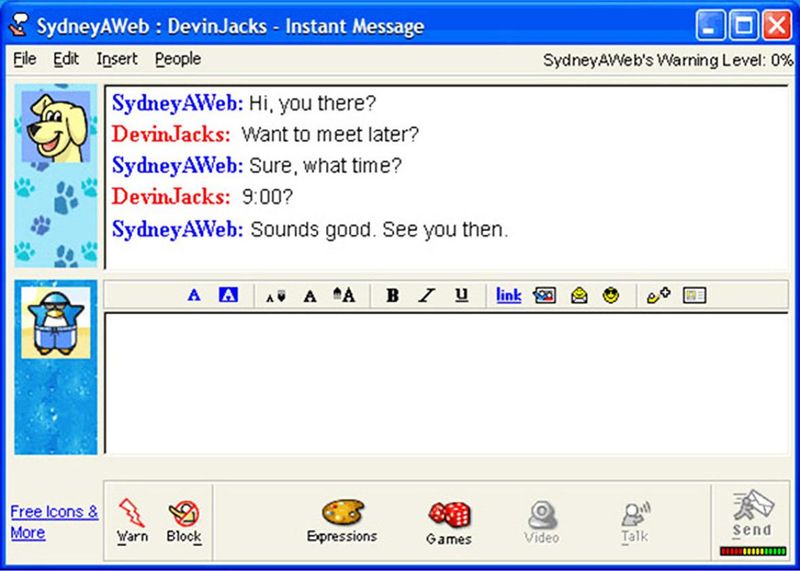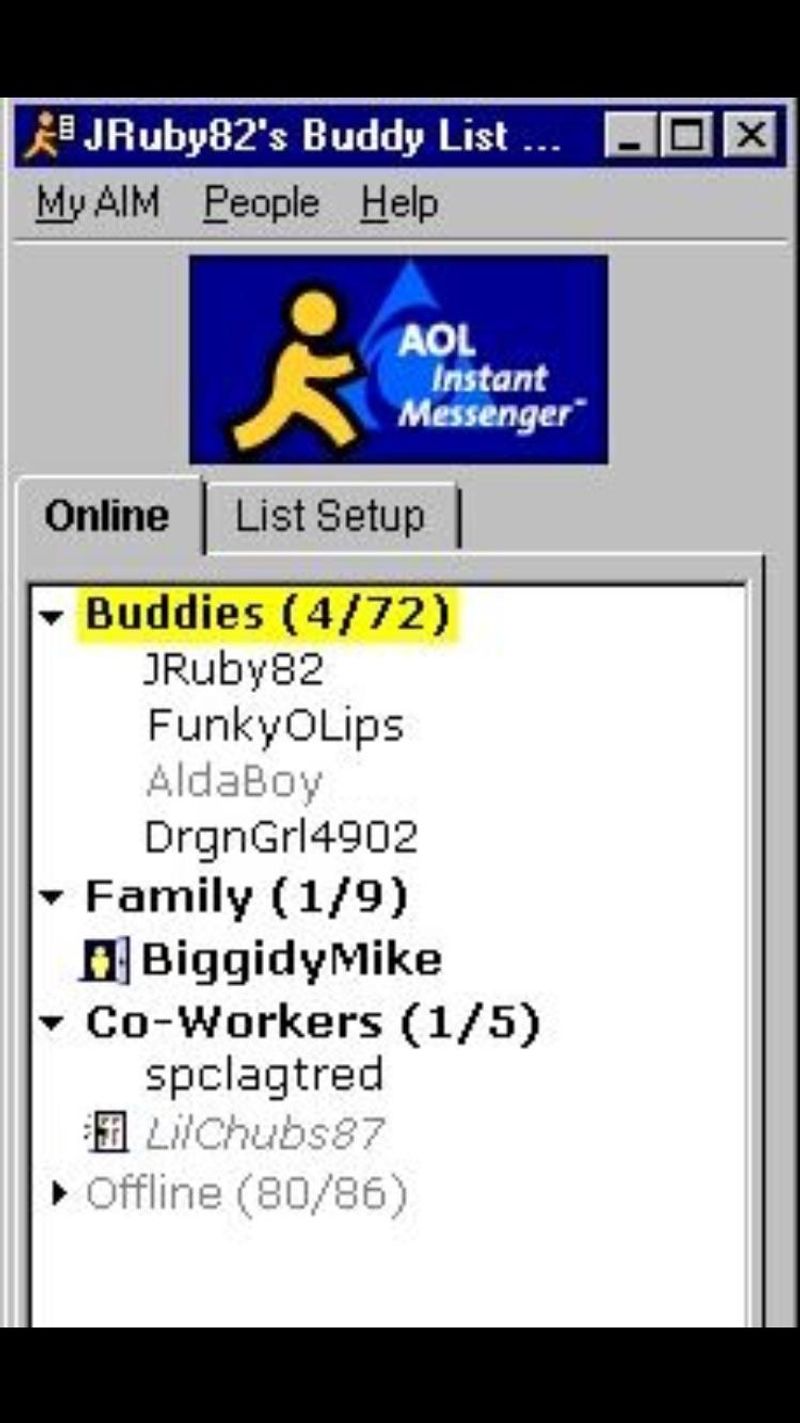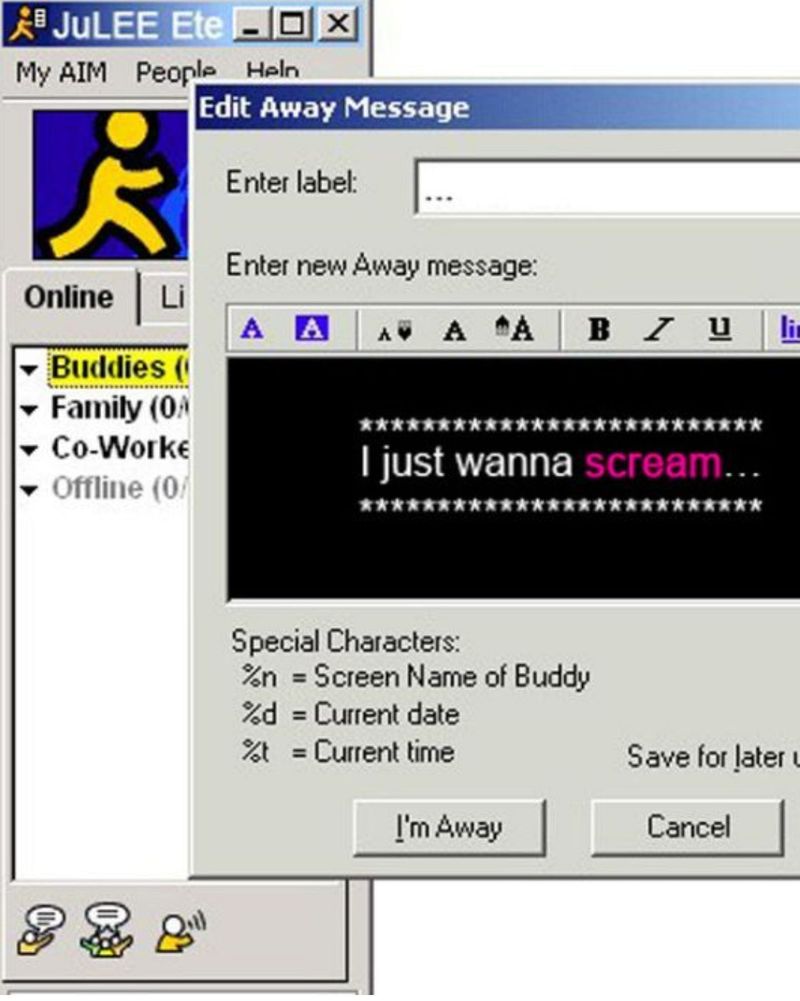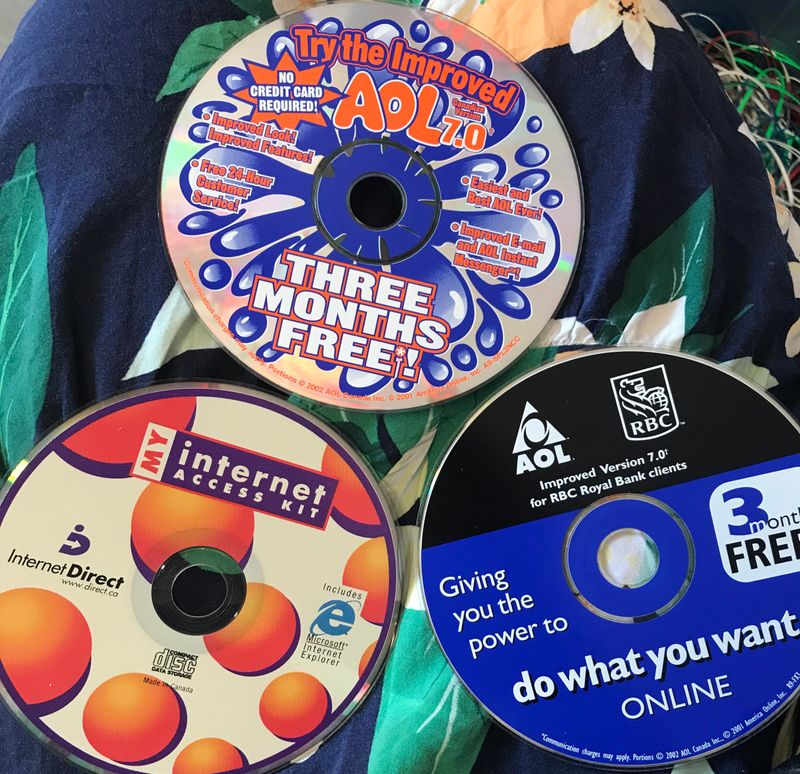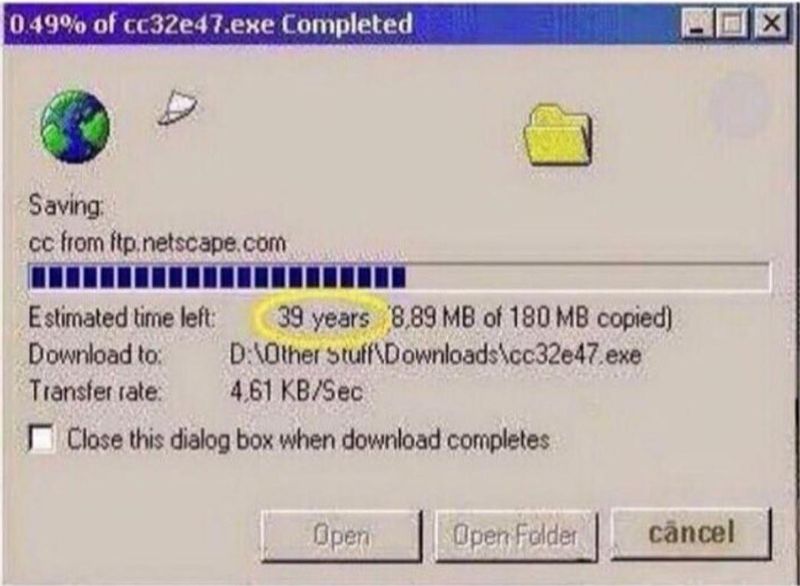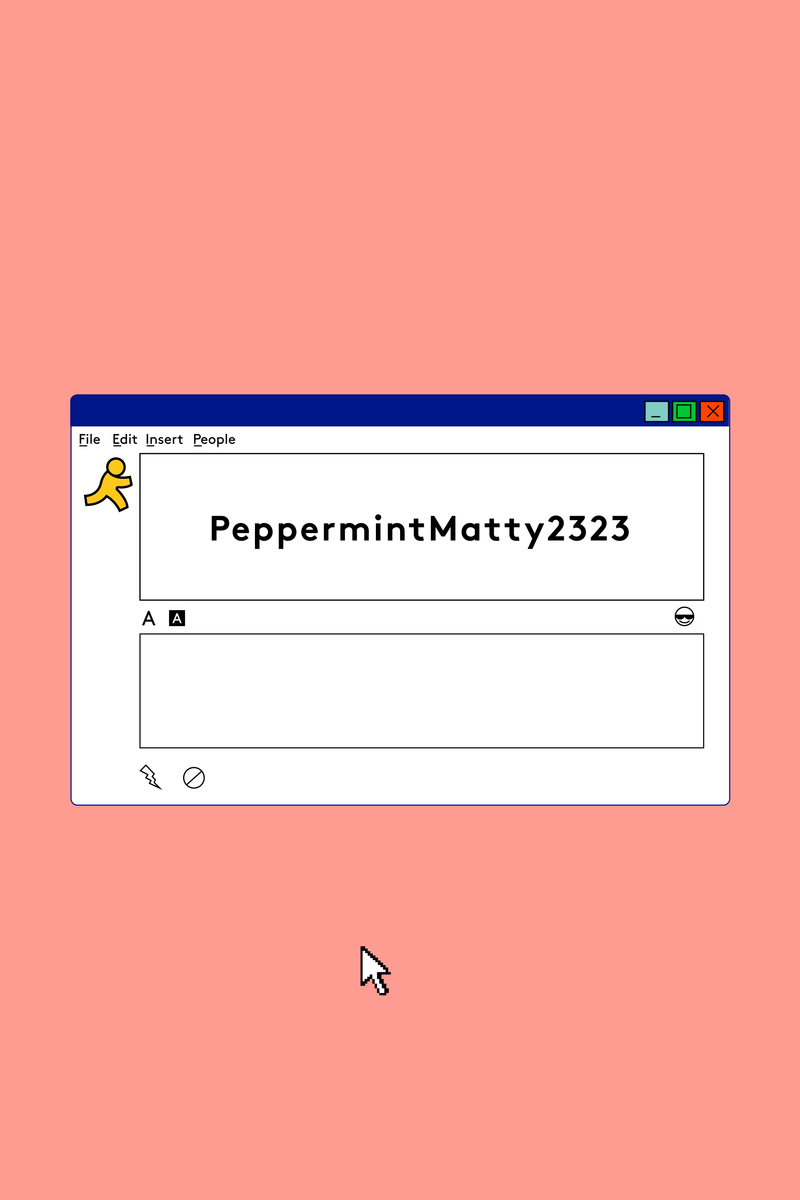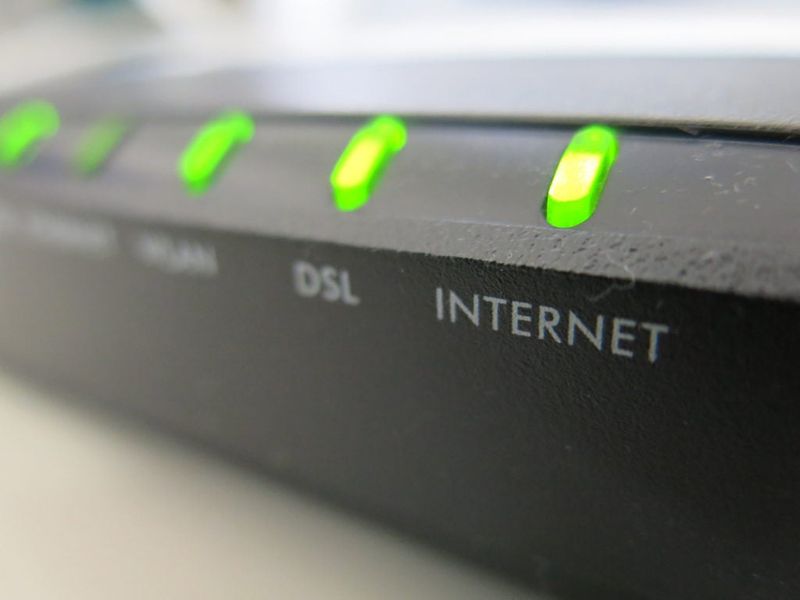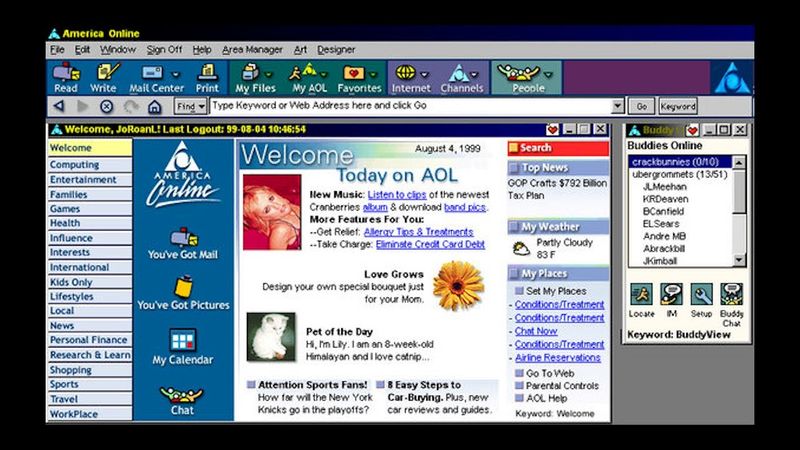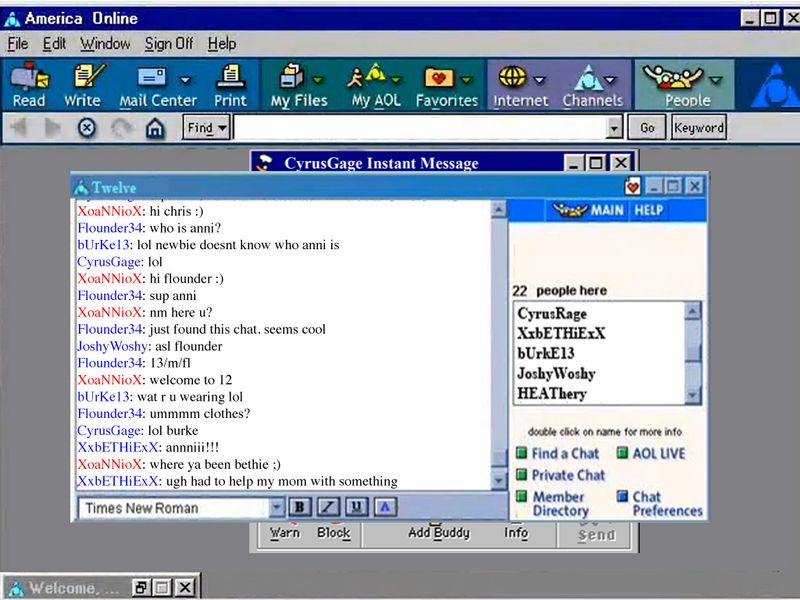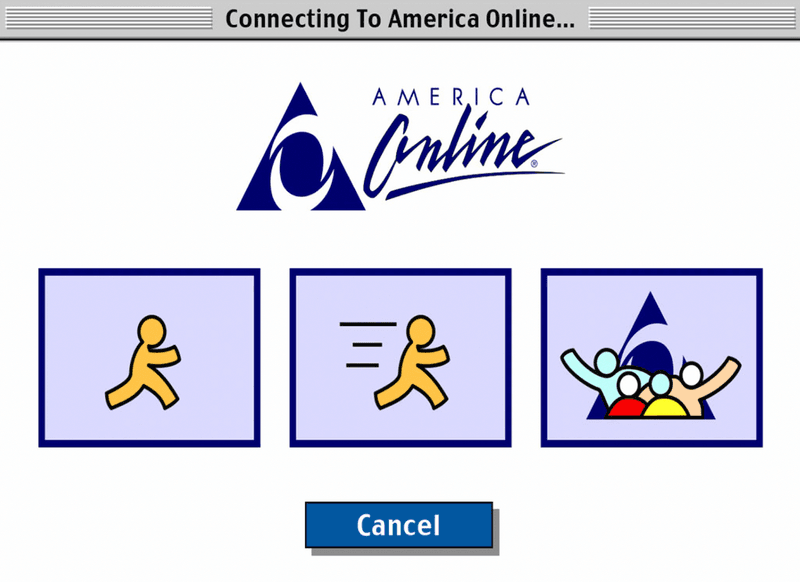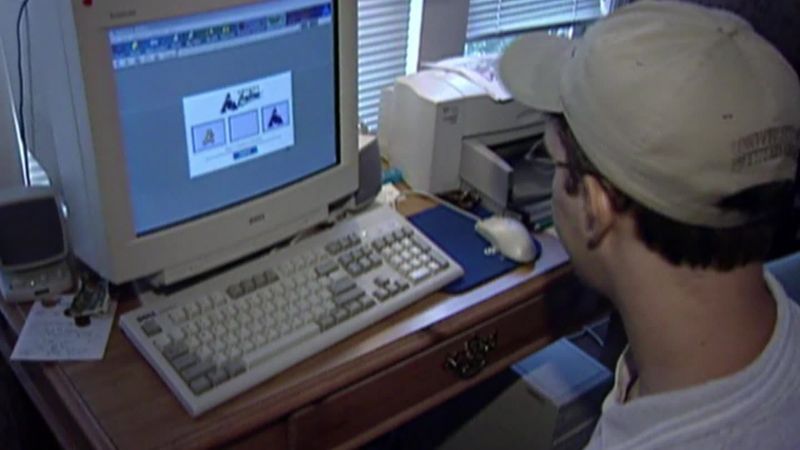Ah, the golden era of dial-up internet and AOL chat rooms—a time when the world was just beginning to unlock the wonders of the World Wide Web.
For those who grew up in this era, the memory of that iconic modem screech or the thrill of hearing “You’ve Got Mail!” is surely etched in the mind.
Here, we explore 26 unforgettable aspects of those early digital days, capturing the essence of an age where slow connections and quirky chat rooms were the norm.
1. The Legendary Modem Screech
The infamous modem screech—both thrilling and exasperating. This digital noise was the soundtrack to our online adventures.
You loved it because it heralded a new world of exploration, though sneaking online wasn’t easy with its cacophony alerting everyone. But, oh, the frustration! It sounded like a robot in distress, impossible to ignore. Going online meant enduring this auditory assault, making covert browsing a challenge.
Nonetheless, it was a rite of passage into the digital age, a sound synonymous with discovery and an escape into the virtual world that awaited just beyond the noise.
2. “You’ve Got Mail!”
“You’ve Got Mail!”—a phrase that once sent ripples of excitement through every dial-up user’s heart. It symbolized incoming messages, chain emails, and connections.
The joy was immense, especially when anticipating a message from friends or new online acquaintances. Yet, reality often brought disappointment, revealing endless spam or emails from overly enthusiastic pen pals typing in ALL CAPS.
Still, this notification was more than just an email alert—it was an emblem of early online communication, capturing the thrill of the unknown and the anticipation of digital correspondence in the nascent internet era.
3. Tying Up the Phone Line
Remember the days when going online meant monopolizing the household phone line? Being online was bliss, free from interruptions.
However, it also meant missing vital calls, much to mom’s chagrin when grandma couldn’t get through. This battle for the phone line defined the age, with dial-up users caught in the crossfire. While the solitude of being unreachable was appealing, the chaos it unleashed in family dynamics was real.
This aspect of dial-up life was both a blessing and curse, forcing users to balance their online escapades with the demands of staying connected in the offline world.
4. Choosing the Perfect AOL Screen Name
Crafting the ideal AOL screen name was an art form, a chance to reinvent oneself. From edgy like “xXSk8rBoiXx” to mysterious like “LunarGoddess88,” these pseudonyms became digital identities.
The process was exhilarating, though heartbreak often followed when top choices were taken, forcing numbers or odd tweaks. This quest for the perfect moniker often led to creative breakthroughs, as users balanced uniqueness with personal flair.
Despite the challenges, choosing a screen name was a rite of passage, marking the beginning of countless digital interactions and friendships in the early internet landscape.
5. Endless Chat Room Options
Chat rooms were the bustling hubs of online interaction, ranging from “Teen Chat” to niche interest groups. They opened doors to global conversations, making the world feel like a connected village.
While these spaces were exciting, they came with their dark sides—lurkers, trolls, and the dreaded “A/S/L?” inquiry upon entry.
Despite these challenges, chat rooms thrived as vibrant communities, encouraging new friendships and lively discussions. They were a testament to the internet’s potential, offering a platform for diverse voices and creating a sense of belonging in the vast digital expanse of the dial-up era.
6. Instant Messaging (IM) Addictions
Instant messaging ushered in a new era of rapid communication, complete with custom away messages and memorable sound effects. The thrill of real-time conversation was addictive, with the door-opening and door-closing effects punctuating interactions.
Yet, IM had its downsides—the anxiety of seeing someone typing, then nothing, left users questioning intentions. This duality defined the experience—a blend of excitement and unease, reflecting the dynamic nature of early digital communication.
Despite its quirks, instant messaging was a cornerstone of online interaction, shaping how people connected and paving the way for future advancements in digital dialogue.
7. The Birth of Internet Slang
Internet slang revolutionized communication, introducing shortcuts like LOL, BRB, and TTYL. These concise expressions allowed users to convey thoughts swiftly, becoming staples of online dialogue.
While loved for their efficiency, internet slang faced criticism for allegedly eroding grammar standards. Nonetheless, these terms endured, evolving alongside technology and remaining relevant today. They represented a shared digital culture, bridging gaps and fostering understanding.
The birth of internet slang was more than linguistic innovation—it was a cultural phenomenon, reflecting the internet’s transformative impact on language and communication, cementing its role in everyday conversations across the globe.
8. Messy “Buddy List” Organization
The buddy list—both a social lifeline and a chaotic mess. Organizing friends, family, and crushes into lists like “School Friends” or “Cool Peeps” was both thrilling and daunting.
This digital roster often spurred obsessive online watching, especially when hoping a certain someone would appear. However, panic ensued if they signed off too quickly. The buddy list symbolized the early internet’s social landscape, serving as both a connection tool and a source of anxiety.
It captured the essence of digital relationships, where being online or offline dictated social interactions and shaped the dynamics of internet friendships.
9. Creative Away Messages
Away messages were a canvas for self-expression, showcasing everything from song lyrics to cryptic quotes. These personalized messages reflected moods and personalities, offering a glimpse into users’ lives.
While loved for their creativity, away messages also sparked drama, especially when their mysterious content seemed targeted. The tension between public and private personas played out in these snippets of text, illustrating the complexities of online identity. Crafting the perfect away message became an art, blending humor, emotion, and intrigue.
It was a unique form of digital storytelling, capturing the spirit of early online communication and self-representation.
10. Running Multiple AOL Discs
AOL’s promotional discs were both a blessing and a burden. Users loved the endless free trials, extending online time without paying.
However, these discs accumulated in drawers and cars, a constant reminder of dial-up’s persistence. The ritual of switching discs became a strategy for staying connected, as savvy users exploited new offers.
Despite their mundane appearance, these discs symbolized the resourcefulness of early internet users, navigating the constraints of technology to maintain access. They were relics of a bygone era, representing the determination to harness the internet’s promise without succumbing to its commercial demands.
11. “Eternal” Download Times
Patience was a virtue in the dial-up era, especially when faced with eternal download times. Watching an image load line-by-line was both thrilling and exasperating. Each progressing line felt like unwrapping a digital gift, embodying the anticipation and frustration of early internet use.
However, the excitement often turned to despair when connections timed out, dashing hopes of completing downloads. This slow pace forced users to savor every online moment, teaching patience and resilience.
Despite the challenges, these experiences were formative, shaping how users approached technology and highlighting the stark contrast with today’s high-speed digital world.
12. Profiles & Personal Quotes
Crafting an AOL profile was a rite of passage, akin to curating a social media bio today. Users expressed themselves through witty quotes, ASCII art, or heartfelt declarations. These profiles offered a glimpse into personalities, fostering connections.
Yet, the pressure to craft the perfect profile was real—too long, too short, or overly dramatic entries could invite judgment.
Despite this, profiles were cherished as early expressions of digital identity, capturing the spirit of online life. They served as introductions in a vast digital landscape, bridging the gap between anonymity and personal connection in the burgeoning internet age.
13. The Very Real Fear of Disconnecting
Staying connected was paramount in the dial-up era, with the fear of disconnection looming large. Each online session was precious, often interrupted by phone calls or mishaps. This uncertainty made every moment online feel vital, cultivating a sense of urgency and appreciation.
Users were acutely aware of their fragile connection, treating it as a rare commodity. The constant threat of being booted offline highlighted the limits of early internet infrastructure, reinforcing the value of connectivity.
This fear underscored the internet’s role as an emerging lifeline, shaping users’ experiences and expectations in the digital frontier.
14. Dial-Up’s Sleepy Pace
The dial-up era was marked by its leisurely browsing pace. Each webpage loaded slowly, making online exploration deliberate. Users learned patience, appreciating the content they accessed after enduring long waits. This pace fostered a unique form of digital savoring, turning browsing into an achievement.
However, attempting tasks like reading news or online shopping was arduous, with pages taking ages to load. This slow speed emphasized the challenges of early internet use, acting as both a barrier and a teacher.
It highlighted the transformative power of technology, underlining the joy and frustration inherent in the digital experience.
15. Parent Overwatch
The internet’s early days were often a battleground between curious kids and vigilant parents. For some, the lack of supervision made it a digital Wild West, ripe for exploration. But many faced the scrutiny of hovering parents, questioning every online move. This oversight was both a safeguard and a nuisance, limiting digital freedom.
Yet, it underscored the internet’s novelty and the generational divide in understanding its potential and pitfalls.
This dynamic shaped early online experiences, balancing discovery with caution, and reflected the evolving relationship between technology, privacy, and familial boundaries in the digital age.
16. Random IMs from Strangers
Receiving random IMs was a hallmark of early internet interaction, offering both excitement and unease. The possibility of connecting with someone from afar was thrilling, yet these encounters often veered into uncomfortable territory.
Persistent “A/S/L?” queries and unwanted attention from strangers were common, especially for users with feminine screen names. This dynamic highlighted the internet’s dual nature—a space for connection and a realm of anonymity that invited unwanted interactions.
Despite these challenges, random IMs were a key feature of the dial-up era, reflecting the internet’s role as a new frontier of social engagement and exploration.
17. Signing Out = Freedom
Logging off AOL was akin to closing a door, offering a respite from the online world. Once signed out, users were truly offline, free from digital demands. This disconnect provided a sense of freedom, allowing individuals to escape the pressures of constant communication.
Yet, it also brought the fear of missing out, as important gossip or news could surface moments after logging off. This duality captured the essence of early internet use—where the balance between connection and solitude was ever-present.
Signing out symbolized a temporary reprieve from digital life, highlighting the era’s unique relationship with technology.
18. That Friend with DSL
Having a friend with DSL was a game-changer in the dial-up era. Their faster connection meant seamless browsing and downloads, a luxury for dial-up users. Visiting their home was a glimpse into the future, highlighting the stark contrast between the technologies.
However, this envy was tempered by the friend’s incessant bragging, often rubbing their high-speed access in everyone’s face.
Despite this, the allure of DSL remained strong, offering a tantalizing taste of what was to come in internet connectivity. This dynamic reflected the divide between technological haves and have-nots, shaping early online experiences and aspirations.
19. AOL Keywords
AOL keywords were a magical shortcut, whisking users to themed pages with a single word. This feature was a marvel, simplifying navigation and adding an element of mystery to browsing.
However, the reality often fell short when pages took forever to load or had broken links.
Despite these setbacks, keywords embodied the creativity of early internet design, offering a glimpse into curated content. They represented the promise of a connected world, where information was just a keyword away. AOL keywords were a testament to the evolving nature of the internet, balancing innovation with the constraints of dial-up technology.
20. Buddy Icons
Buddy icons were small yet mighty expressions of personality in the AOL world. Users toggled between cartoon faces, pop culture nods, and edgy symbols to reflect moods or interests.
These icons added flair to the digital landscape, fostering a sense of identity and belonging. However, the abundance of generic smileys or pixelated gifs could sometimes lead to secondhand embarrassment.
Despite this, buddy icons were a beloved feature, encapsulating the creativity and individuality of early online interactions. They represented the desire for self-expression in a burgeoning digital community, marking a pivotal moment in the evolution of personal branding online.
21. Riding the “Chatroom High”
Chatrooms were a vibrant arena for social interaction, offering a high of anonymous conversation and discovery. Users vented, flirted, and exchanged music tips, reveling in the freedom of digital anonymity.
However, this excitement often led to drama—fights, cliques, and the occasional boot from overzealous moderators. Despite these challenges, the “chatroom high” was addictive, capturing the essence of early online communities. It reflected the internet’s potential for connection, blending the thrill of new interactions with the pitfalls of digital dynamics.
Chatrooms were a microcosm of the larger digital world, embodying both its possibilities and its challenges.
22. Phonetic Typing
Phonetic typing emerged as a quirky feature of online conversation, where speed often trumped accuracy. Spelling resembled spoken language, like “wut r u doin 2nite?” This approach allowed for rapid communication, though deciphering vowel-free rants could be challenging at times.
This style of typing reflected the informal, conversational nature of early internet dialogue, prioritizing speed over precision. While it sometimes led to misunderstandings, phonetic typing was an emblem of the internet’s evolving communication landscape.
It captured the spirit of innovation and adaptation, showcasing the creative ways users navigated the limitations and possibilities of digital text.
23. AIM vs. AOL
Transitioning from AOL to AIM was like leveling up in the digital world. AIM offered a streamlined experience, appealing to those seeking a more efficient platform.
However, this shift brought challenges—determining who was on which platform and juggling dual accounts. Despite the confusion, the allure of AIM’s sleek interface and improved functionality was undeniable.
This transition marked a pivotal moment in online communication, reflecting the internet’s rapid evolution and users’ desire for innovation. The AIM vs. AOL debate encapsulated the technological advancements and growing expectations of digital communication, shaping the path forward for future platforms.
24. Digital Possessiveness
Digital possessiveness was a common theme in AOL chatrooms, where exclusive spaces became prized possessions. Having a private room with besties was a badge of honor, symbolizing trust and camaraderie.
However, this exclusivity often led to tension when outsiders were invited without approval. This possessiveness highlighted the delicate balance between online friendship and rivalry, illustrating the complexities of digital relationships. Despite these challenges, private chatrooms were cherished spaces, offering a sense of belonging and intimacy.
They captured the essence of early online interaction, where digital bonds were forged and tested in equal measure.
25. Email Forwarding Nightmares
Email chains were a double-edged sword of entertainment and annoyance. Fun quizzes and jokes brought joy, but the dreaded “Forward this to 10 friends or else” messages were manipulative spam. These emails flooded inboxes, creating a cycle of forwarding frenzy.
While some enjoyed the novelty, others lamented the clutter and pressure to participate. This phenomenon reflected the early internet’s viral nature, where content spread rapidly and unpredictably.
Email forwarding nightmares were a testament to the evolving digital culture, highlighting the challenges of managing online communication in a world still figuring out the etiquette and expectations of email.
26. Meeting an AOL Friend IRL
Meeting an AOL friend in real life was a bold, thrilling move, often leading to lasting friendships or more. This act of bridging the digital-physical divide was exhilarating, offering a new dimension to online connections.
However, the potential for horror stories and catfishing dangers loomed, underscoring the risks involved. Despite these fears, many ventured to meet their digital counterparts, driven by curiosity and a desire for deeper connections.
This dynamic captured the dual nature of online interactions, where opportunity and peril coexisted. Meeting an AOL friend IRL was a milestone, reflecting the evolving relationship between digital and real-world socializing.
